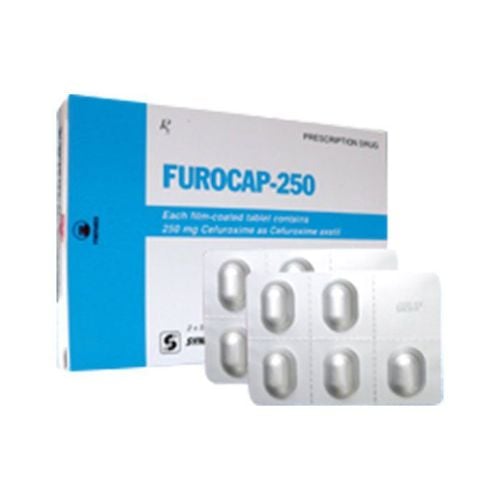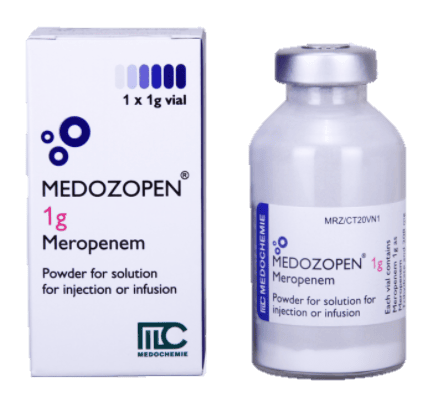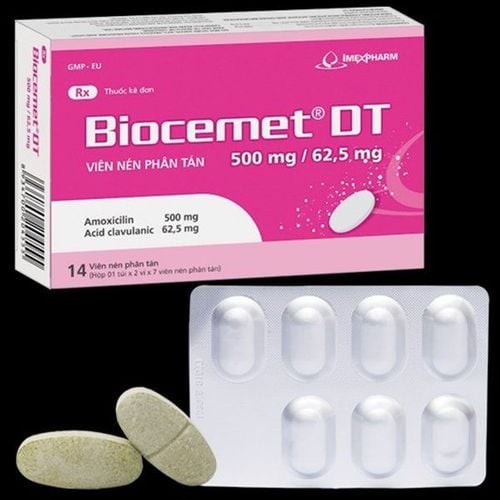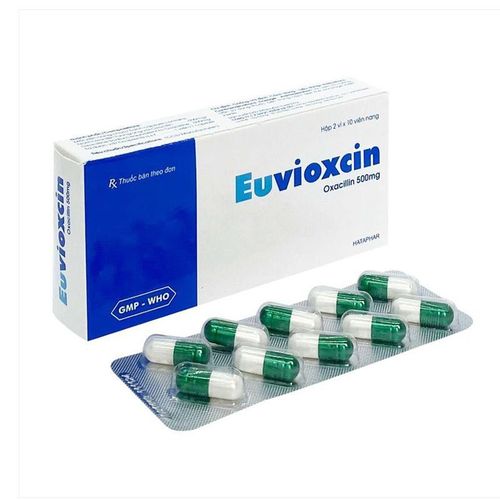This is an automatically translated article.
Prazintel medicine belongs to the group of drugs that treat parasites, anti-infectives, antivirals, antifungals. Praziquantel is indicated for the treatment of broad-spectrum helminths.
1. What are the effects of Prazintel?
1.1. What is Prazintel? Prazintel belongs to the group of drugs used to treat parasites, infections, viruses, and fungi. Prazintel medicine contains the following ingredients:
Main active ingredients : Praziquantel Excipients: Modified starch, wheat starch, dicalcium phosphate, povidone K30, sodium lauryl sulfate, magnesium stearate, vivacoat PA White... Prepared in the form of 600mg tablets, box of 1 blister, blister of 4 tablets. Prazintel is recommended for use in children 4 years of age and older and adults.
1.2. Indication of the drug Prazintel Praziquantel is a broad-spectrum anthelmintic, so it is indicated for use in the following cases:
Schistosoma schistosomiasis; Clonorchis sinensis (Chinese liver fluke), Opisthorchis viverrini (Southeast Asian liver fluke); Some other types of fluke: Fasciolopsis buski (intestinal fluke), Heterophyes heterophyes (intestinal fluke), paragonimus westermani (lung fluke). No effect on Fasciola hepatica (sheep liver fluke); Tapeworms causing disease in humans: Diphyllobothrium latum (fish tapeworm), Dipylidium caninum (dog and cat tapeworm), Hymenolepis nana (dwarf tapeworm); Taenia saginata (cow fluke); Taenia solium (swine fluke),; Prazintel is effective against susceptible flukes in the larval, immature and adult stages.
The drug has been used to effectively treat neurocysticercosis, except for ocular larval disease.
Prazintel is prescribed by doctors for use in the following cases:
Kills schistosomiasis, small liver flukes, Paragonimus lung flukes, Opisthorchis flukes, other flukes, tapeworms, brain larvae. The drug is effective in the adult and larval stages.
2. Usage of the drug Prazintel
2.1. How to take Prazintel medicine Prazintel is usually taken with meals. The patient should not chew the tablet, but can break it into 2 or 4 to take separate doses. To reduce the risk of ADRs on the nervous system, praziquantel can be used in combination with dexamethasone 6-24 mg/day or prednisolone 30-60 mg/day in patients with brain fluke larvae.
2.2. Dosage of Prazintel Schistosomiasis: The usual dose for adults and children over 4 years old is 60mg/kg/day in 3 divided doses or 40mg/kg/day in 2 divided doses at 4-6 hour intervals (or a single dose). 40-60 mg/kg/day). Use for 1 day.
Small liver fluke Clonorchis sinensis and Opisthorchis viverrini: The usual dose for adults and children over 4 years old is 75 mg/kg/day divided into 3 times (a single dose of 40-50 mg/kg/day can be used). Use for 1-2 days.
Other tapeworms:
Fasciolopsis buski, Heterophyes heterophyes, Metagonimus yokogawai: 75 mg/kg/day, 3 divided doses, for both adults and children. Nanophyetus salmincola: 60 mg/kg/day, divided into 3 times a day for both adults and children. Paragonimus westermani: 25 mg/kg/time, 3 times a day, for 1-2 days, for both adults and children. P. uterobilateralis: 25 mg/kg/time, 3 times a day, for 2 days. Tapeworms: Adult and intestinal stage; Fish tapeworm, beef fluke, dog fluke, pork fluke: 5-25 mg/kg, single dose for both adults and children.
Hymenolepis nana: 25 mg/kg/time, single dose for both adults and children.
Larval and tissue stage: Treatment of larval stage of swine flu: 50 mg/kg/day, divided into 3 times, for 15 days. For swine flu larval disease: Adults and children use a dose of 50-100 mg/kg/day, divided into 3 equal doses, orally daily, for 30 days. For cysticercosis in the brain: 50 mg/kg/day, divided equally in 3 times, for 14-15 days (maybe up to 21 days for a small number of patients). Handling missed dose: Take it as soon as you remember, if it is almost time for the next dose, skip the missed dose and continue taking the medicine as usual, do not take up the next dose.
Treatment of overdose: Very little is known about acute poisoning with praziquantel. Use a fast-acting laxative in case of an overdose of praziquantel. Activated charcoal may reduce the absorption of the drug if taken within 1-2 hours of taking the drug. For patients who are not alert or unable to drink, activated charcoal should be given through a nasogastric tube.
3. Contraindications of the drug Prazintel
Patients who are allergic to the main ingredient praziquantel or any of the excipients listed above of Prazintel. Cystic disease in the eye and in the spinal cord. Concomitant use with strong inducers of Cytochrome P450 such as rifampicin. If the patient is taking rifampicin, it should be taken 4 weeks before praziquantel treatment and rifampicin can be resumed 1 day after praziquantel is finished.
4. Notes when using the drug Prazintel
Note when using Prazintel in the following cases:
Caution should be exercised when using Prazintel in patients with a history of convulsions. Careful when treating neuroschistosomiasis, it is best to still require the patient to be hospitalized during the treatment period. Prazintel should be used with caution in people with irregular heartbeats. During treatment with Prazintel it is necessary to monitor the heart rate. With caution in patients with hepatomegaly due to schistosomiasis, hepatic metabolism of praziquantel may decrease, resulting in higher and more prolonged concentrations of the unchanged drug. Caution should be exercised when administering the drug to people over 65 years of age, because the elderly are more likely to have reduced kidney function, and the risk of drug toxicity is higher. Caution should be exercised when administering the drug to people with gluten allergies, because the drug contains wheat starch excipients: Wheat flour may contain gluten, but only in very small amounts, and is therefore considered safe for gluten allergies. Praziquantel is secreted into breast milk. The mother must stop breastfeeding while taking the drug and 72 hours after stopping the drug. During this time the milk must be expressed and discarded. Studies in pregnant women have shown no difference in rates of preterm birth or miscarriage when compared with controls. However, the drug should still not be used in pregnant women due to insufficient evidence. Effects of the drug on the ability to drive and use machines. Do not drive, operate machinery while taking the drug and even after 24 hours after taking it, because the drug can cause dizziness, drowsiness.. Drug interactions
Drugs metabolized by liver enzymes, so take them at the same time. Drugs that increase CYP enzyme activity (eg, carbamazepine, dexamethasone, phenytoin, phenobarbital) may decrease plasma concentrations of praziquantel. Conversely, concomitant administration of Prazintel with drugs that decrease the activity of CYP isoenzymes (eg, cimetidine, erythromycin, itraconazole, ketoconazole) may increase plasma concentrations of Prazintel. Avoid concomitant use of Prazintel with rifampicin, Chloroquin, grapefruit juice, Oxamniquin.
5. Side effects of the drug Prazintel
Most patients with cysticercosis when taking Prazintel often experience undesirable effects on the nervous system including: Headache, convulsions, high fever, increased intracranial pressure, possibly due to response inflammation of the body with dead and dead parasites in the central nervous system. There are also other side effects with frequency as follows:
Very common: Headache, dizziness; Abdominal pain, nausea, vomiting; Urticaria; Fatigue Common: Dizziness, mental lethargy; Anorexia, diarrhea; Rash; Tendon pain; Feelings of discomfort, weakness; Very rare: Allergic reactions, serosa, eosinophilia; Epileptic; Arrhythmia; Itchy. Prazintel belongs to the group of drugs used to treat parasites, infections, viruses, and fungi. Praziquantel is indicated for the treatment of broad-spectrum helminths. To ensure the effectiveness of treatment and avoid unwanted side effects, patients need to strictly follow the instructions of the doctor, professional pharmacist.
Follow Vinmec International General Hospital website to get more health, nutrition and beauty information to protect the health of yourself and your loved ones in your family.













